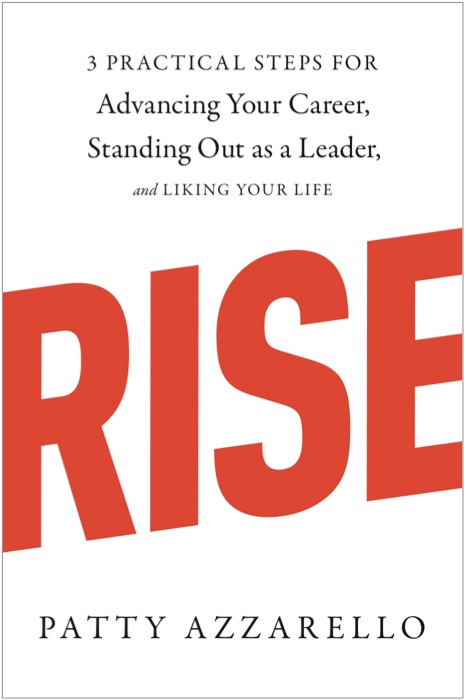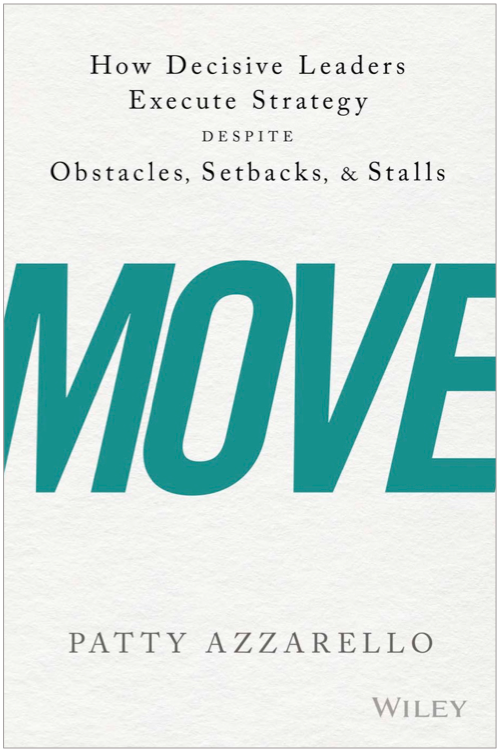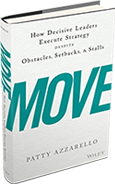 I get a lot of questions about how to best use various online tools and social media for effective networking and managing your Personal Brand online.
I get a lot of questions about how to best use various online tools and social media for effective networking and managing your Personal Brand online.
If you find yourself “out there”, looking for a job, developing a partnership, selling a big deal, looking for funding, people will look for you online, and develop impressions and even make decisions based on what they find.
It’s important to understand and manage the impression your cumulative online behaviors leave.
It comes from both from your online presence and your email behaviors.
There are two outcomes worth avoiding. 1) They find nothing 2) They find the wrong things.
As with everything else I talk about:
Do whatever you do online, on purpose!
Here FIVE ideas to get a basic, positive online presence established, and add value vs. annoy people.
Those of you who are already blogging, building communities, and have jumped in with both feet, please also share your comments and ideas.
ONE: “Can you endorse me?” UGH!
LinkedIn has a feature that allows you to send an email message out to your entire network saying “Can you endorse me?” I can’t tell you how many of these I get.
Remember the number one rule of networking: Give more than you take.
Using this feature is a MEGA-TAKE.
In one moment you ask every single person you are connected with to do something for you, without offering the slightest value (or even saying hello) in return.
Here are some better ways to do it.
Better: Send a personal email, with personal content, requesting a specific person to write a recommendation. If you are asking them to take the time to write a recommendation you can at least take the time to ask them for it personally. And say thank you when they do it.
Best: Write recommendations for other people. On one of my monthly member calls, someone contributed the idea that he spent a day writing LinkedIn profiles for other people. That is one of the most brilliant and useful ideas I have come across for networking by giving vs. taking.
You will find if you do this, people will write a recommendation for you in return. Even if they don’t do it automatically, if you then ask them to write one for you, you have given them something of value before you ask.
TWO: How to approach mass emails
Every once in awhile you want to reach out to all your contacts to ask them for something — like when you need a job.
Again, sending one big “ask” out to your whole database is not good online behavior.
You couldn’t do that on the phone, you’d have to call people and say hello first. Just because you can use email, doesn’t mean you shouldn’t reach out to people in a personal way.
Develop a strategy for sending mass emails that is driven by personalizing as much as possible, and focusing on what you can “give”.
Here is how I have done it:
I went through all of my contacts and divided them into 4 categories.
I think these categories can work for anyone, but it’s worth thinking through what makes groups of people within your contact database distinct from one another.
- Professional contacts: We’ve met, but do not know each other well
- Personal-professional contacts – people I worked with directly, we knew a bit about each other’s careers and lives
- Close Professional Contacts. People I have current relationships with or had significant relationships with in the past.
- Close friends and family.
I then developed a strategy for each group. I’ll use an example for a job search, but this approach can be used for any topic where you want to reach out to your whole database, and not be annoying.
Group #1: Strategy: Professional-Only Tone
Hi [person’s first name],
I wanted to let you know that I am out exploring, seeking new opportunities that match my skills. I’m looking to offer a company [what I specifically offer].
If you can think of any good matches, I would greatly appreciate a pointer or introduction.
I’m interested in learning how you are doing, and how I might be of service to you as well.
Group #2 Personal/Professional tone
Hi [person’s first name],
Life has certainly been interesting since we last talked! I’m on the hunt again, seeking new opportunities that match my skills and looking to offer a company [what I specifically offer].
If you can think of any good matches, I would greatly appreciate a pointer or introduction.
It’s been awhile since we connected. If you get a chance it would be great to hear what you are up to, and what you are working on. And please let me know if I there is anything I can do for you.
By the way: here is a link to some new music I discovered, [or great books I read, etc.] this past year, and a recent photo of me and my family, I thought you might enjoy.
Groups 3 and 4: Individual Personal Mail
For me this was about 150 people. I wrote a personal email to each of them.
You can easily write 10 emails a day till you are done. It’s well worth it.
Something very amusing happened with this group. The email obviously included some elements that were for that person alone – How is life in your new role as a GM? How’s Jill? Still surfing? Remember the time we were at that weird restaurant Pittsburgh? — and some elements that were common to everyone.
I got several responses that said, what system are you using?, I was really impressed at how you were able to merge personal information with common information. I kept reviewing your message to find the “seams”. It must be a really powerful system, would you mind telling me what you used? I smiled as I replied about my great “system” to each of these… “Typing”.
THREE: Tune Your Basic, Minimum Online Presence
What Impression do your online profiles give people?
LinkedIn is one of the easiest and most frequently used places to find people. Having a respectable profile on LinkedIn is a minimum. But take some care in writing your profile. Don’t just casually answer the questions or leave things blank.
Come up with an interesting “Professional Headline” (the text that appears right under your name). Build a compelling description of yourself through how you describe your roles. Make sure you are managing the impression you want to give people.
It’s also worth checking and updating ZoomInfo. Recruiters look here to research people. Search for yourself. If you find nothing, put your information in there, and if you are there, you’ll need to correct and update whatever ZoomInfo has automatically guessed at.
Use a good photo.
1. Use photos. 2. Make sure they are good ones. If you don’t want to invest in a professional photo, at least use one that is current, in focus, and taken by someone other than you pointing the camera at yourself with a dopey look on your face, or a low quality awkward snap captured from a webcam.
I’m amazed at how many attractive, impressive professionals have blurry, boring, unflattering photos for their online profiles. It matters. Your photo needs to be interesting, engaging, and high quality.
FOUR: Build your online presence over time
Online Resume
Look at sites like VisaulCV. These sites let you post your resume, photos, videos, articles. You can create an impressive online presence easily.
Just think how far ahead of the game you will be if you are networking for a job and you can include a link in your emails to an online profile that shows you in a high-impact way: your skills, your ideas, your accomplishments, your references, your interests, and what you can offer.
I recommend starting this now, and adding to it over time. Write articles. Tell your best stories. Have an opinion. Post your references. Over time you can build up a library of marketing tools for your career that will impress the people you point there, and gives google a lot more of you to find.
Blog?
If you have the appetite to write a blog, it’s easy to get started. Check out WordPress. A blog lets you self publish online. It gives google a lot more content to associate with you. It’s an effective way to build thought leadership and a more relevant online presence. Put a link to your blog in your email signature, so people can find it.
Caution: But make sure you have a strategy first. Make sure what you write in your blog is supporting your Personal Brand and adding value to your career. It’ doens’t need to be all business, but you should be proud for any potential employer, partner, or customer to find and read your blog.
You.com?
And if you want your own website and url: www.YourFullName.com that is really easy and inexpensive to do. Just go to GoDaddy.com. It’s not a bad idea to own the domain for your name in any event. You can do it for $9.99/year. If you do this you can integrate your blog into your own site so your blog address will be www.yourfullname.com/blog . This will give you an email with your own url address too.
FIVE: Build your contact database
It is important to build and maintain your contact database. If you have let this go over the years, it’s pretty easy to start rebuilding it through tools like Linked in and Facebook. And it gets better and better once you get started, so don’t wait.
I do three things: (I am not suggesting these are best practices, but they work for me.)
Plaxo: Plaxo embeds itself into MS Outlook and helps keep contact information current. If you and another person both use plaxo, when either of you updates your contact information, it will automatically update in the other person’s Outlook contacts.
LinkedIn is very good for finding people. Once you sign up, you can start finding people and people will start finding you. I used linked in for professional contacts. I occasionally accept linkedin invitations for people I don’t know.
Facebook: More and more professional people are joining all the time. Facebook gives you your own broadcast platform. You post updates with ideas, thoughts, photos, links, videos. The main screen for facebook gives you a news-feed of what all your friends are posting. On Facebook, I don’t become “friends” with people I don’t know. Facebook is not great for finding people, but it is very good for keeping up those all important weak connections with people you know.
It is a good idea every now and then to go to your own Facebook home page and assess: what is the overall impression I am leaving with my series of updates?
A note on twitter: Twitter can be very useful and important if you use it in specific ways, but I would not say twitter is mandatory for having a relevant online presence. (And it’s not useful for finding people.) There has been so much written about twitter, I won’t add to it. If you’re interested in what I do with it, you can follow me on twitter.
The bottom line – online
I talk a lot about building and managing your Personal Brand. Your online presence is an increasingly important channel where your Personal Brand needs to be supported. It’s about how you show up online and how you use email.
The bottom line is that it is no longer acceptable to be invisible online if you want to be relevant and stand out in the real world. And it’s important to manage your online presence on purpose so it reflects the right image of the person you want to be known as.
Executive Job Search Workshop
I am hosting a workshop to help people go after and win their next executive job. It will be in the Bay Area in May. You can learn more about it and sign up early here. If you’re interested don’t wait. I am limiting attendance to 10 seats.
WANT BLOG UPDATES SENT TO YOU?
Subscribe here for email or RSS updates.
Follow me on twitter


